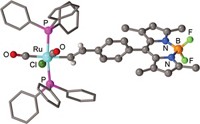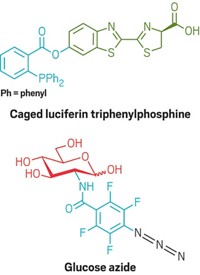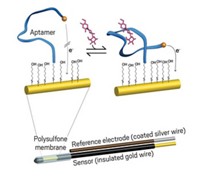Advertisement
Grab your lab coat. Let's get started
Welcome!
Welcome!
Create an account below to get 6 C&EN articles per month, receive newsletters and more - all free.
It seems this is your first time logging in online. Please enter the following information to continue.
As an ACS member you automatically get access to this site. All we need is few more details to create your reading experience.
Not you? Sign in with a different account.
Not you? Sign in with a different account.
ERROR 1
ERROR 1
ERROR 2
ERROR 2
ERROR 2
ERROR 2
ERROR 2
Password and Confirm password must match.
If you have an ACS member number, please enter it here so we can link this account to your membership. (optional)
ERROR 2
ACS values your privacy. By submitting your information, you are gaining access to C&EN and subscribing to our weekly newsletter. We use the information you provide to make your reading experience better, and we will never sell your data to third party members.
Analytical Chemistry
Tracking Histamine Levels With Glowing Nanosensors
Biosensors: Researchers expand the range of biomolecules that optical nanosensors can detect
by Olga Kuchment
June 28, 2013
To study physiology in animals, researchers sometimes monitor levels of key small molecules in their bodies. Changes in the concentrations of these chemicals, like histamine, can indicate the start of an immune response, how a disease progresses, or how an animal responds to an experimental treatment. Unfortunately, monitoring the small molecules often requires repeated blood draws or invasive electrodes implanted through the skin. Now scientists have developed nanosensors that glow with an intensity corresponding to histamine levels (Anal. Chem. 2013, DOI: 10.1021/ac400575u). By injecting the sensors into mice, the scientists could watch the rise and fall of histamine levels in real time.
Heather A. Clark, an analytical chemist at Northeastern University, started developing nanosensors for biomonitoring 15 years ago (Sens. Actuators, B 1998, DOI: 10.1016/S0925-4005(98)00212-3). Her earlier nanosensors, which consisted of organic dyes embedded in a polymer matrix, can be injected in the skin like droplets of tattoo ink. When the dyes in the sensors recognize a chemical of interest, they emit light at a specific frequency.
But whenever researchers wanted to detect a specific chemical, they had to design a new sensor that worked with that chemical. This need for redesigning the sensors for each application meant they could detect only a small range of molecules, such as sodium ions, glucose, or oxygen.
Clark and postdoctoral fellow Kevin J. Cash came up with an idea to get around the redesign issue and expand the range of compounds they could monitor. They decided to couple enzymes with nanoparticles containing a platinum porphyrin dye, which they had designed previously. The particles are phosphorescent, and the intensity of light they emit corresponds inversely to local oxygen levels: Less oxygen leads to brighter particles.
Their choice of enzyme would depend on the molecule they wanted to monitor. The enzyme would have to react with that chemical while consuming oxygen. So when levels of the molecule are high, the enzyme consumes large amounts of oxygen, and the nanoparticles glow bright.
The pair decided to test this strategy by trying to monitor levels of histamine, a molecule involved in inflammation and allergic reactions. The enzyme they picked to couple with their nanoparticles was diamine oxidase, which converts histamine and oxygen to hydrogen peroxide and other metabolites.
Clark and Cash injected a mixture of diamine oxidase and nanosensors into the skin of anesthetized mice and then injected histamine into each mouse’s abdomen. As a control, they injected nanosensors without the enzyme in another spot on the mice’s skin. They shined 395-nm-wavelength light on the mice’s skin to excite the phosphorescent particles. They then measured the intensity of light glowing through the skin of each mouse over the course of an hour.
Over that time, the intensity of the light from the enzyme-coupled nanosensors changed twofold, while the enzymeless sensors’ emissions barely changed. The change in the sensors’ glow matched data on histamine levels collected by conventional dialysis methods, confirming the accuracy of the nanosensors. The detection limit for the sensors was 1 mM, but histamine levels in the body can be as low as 4 nM.
However, the study represents an exciting first step toward an alternative sensing method, says Peter Petillo, chief science officer at Pinnacle Technology, a company that designs and manufactures a variety of biosensors. For the technique to become practical, the researchers need to increase its sensitivity to detect the lowest biologically relevant histamine levels. Also, the researchers should determine how long the enzymes will stay active in the skin—the longer, the better.
Clark and Cash are working on several ways of increasing the system’s sensitivity, including tethering the enzymes to the nanosensors to localize the drop in oxygen to the phosphorescent dye.





Join the conversation
Contact the reporter
Submit a Letter to the Editor for publication
Engage with us on Twitter